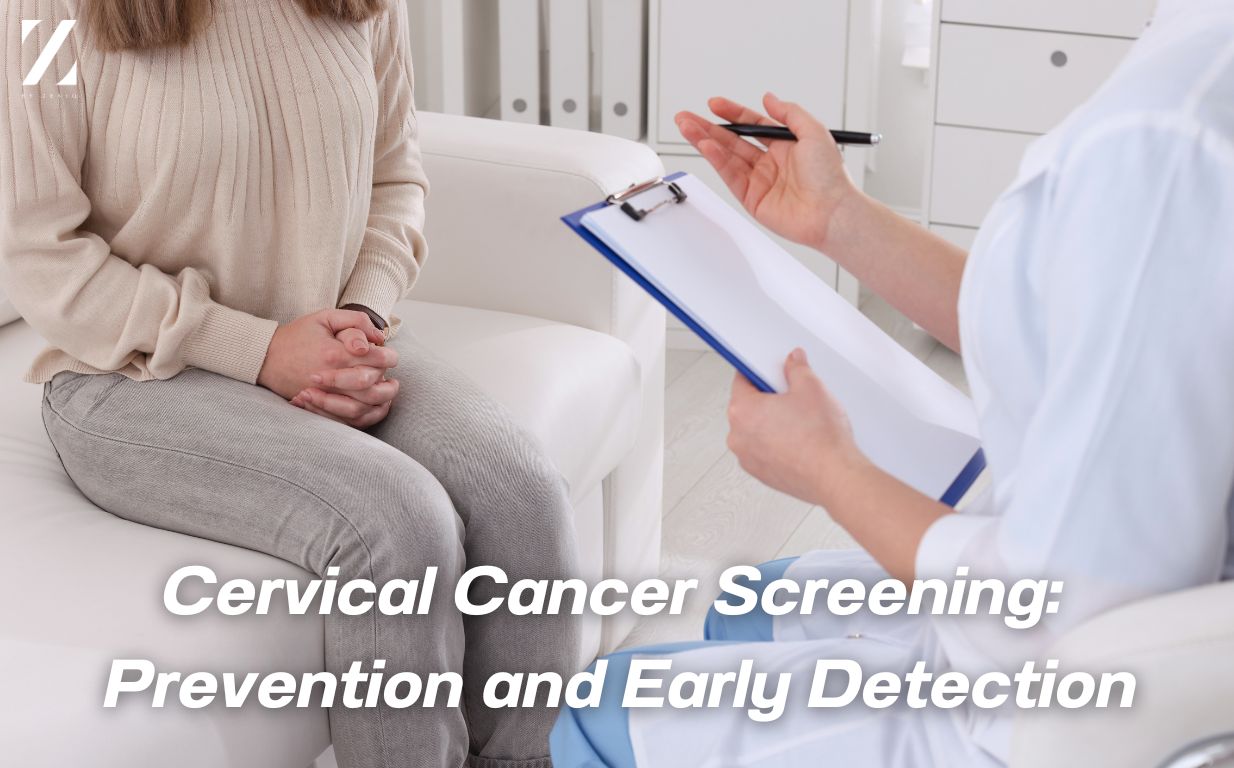Cervical Cancer is one of the most common cancers affecting women worldwide and a significant cause of cancer-related deaths among women. Although Cervical Cancer is preventable and treatable when detected early, screening remains essential for reducing incidence rates and mortality. Her we explain the importance of cervical cancer screening, screening methods, and preventative measures to help women detect and prevent the disease early on.
Understanding Cervical Cancer
Cervical cancer results from abnormal cell growth in the cervix, often caused by infection with the Human Papillomavirus (HPV). While HPV infections are common among women, persistent HPV infection of high risk strains can lead to cell changes in the cervix that may turn cancerous over time.
Risk factors include having sexual activity at a young age, multiple sexual partners, smoking, and a weakened immune system.
Cervical Cancer Screening Methods
Cervical Cancer screening helps detect to early-stage cancer or abnormal cell changes that could develop into cancer. Primarily there are two ways to screen: Pap Smear Test and HPV Test:
Pap Smear Test (Papanicolaou Test)
A Pap smear involves collecting cell samples from the cervix to check for changes that may signal cancer. This test helps detect abnormal cell conditions at an early stage, which can be treated before these cells develop into cancer.
HPV Test
The HPV test detects the presence of HPV in cervical cell samples, identifying the virus responsible for most cases of cervical cancer. This test helps women with a higher risk of HPV infection receive additional care and close monitoring. It is often used as an adjunct testing modality alongside the Pap smear.
The Importance of Cervical Cancer Screening
Cervical Cancer screening reduces the mortality rate by detecting abnormal cellular changes at an early stage, allowing treatment before cancer progresses, and enhances quality of life. It also provides an opportunity for high-risk women infected with HPV to receive appropriate care, thereby reducing cancer risk.
Precautions for Screening
Women are recommended to begin Cervical Cancer screening at 21 and continue regularly, either every year or every two years, based on medical advice. The screening frequency may vary depending on age and sexual history.
As crucial as Cervical Cancer screening is, there are limitations. In some cases, it may not detect cell changes or positive results may require additional testing to confirm the findings.
Post-Screening Care
After the screening, it is important to follow proper post-screening care to ensure comfort and address any concerns.
What to Expect After a Pap Smear:
Mild Discomfort or Spotting: Some women may experience mild cramping or spotting after the procedure. This is normal and usually resolves within a day or two. If symptoms persist or worsen, it’s important to consult your attending doctor.
Avoiding Intercourse: It’s advisable to avoid sexual intercourse for at least 24 to 48 hours after the Pap smear to allow the cervix time to heal, especially if there was any light bleeding.
Monitoring for Abnormal Symptoms: While mild bleeding or spotting is typical, heavy bleeding, unusual pain, or signs of infection (such as foul-smelling discharge or fever) should be reported to your doctor immediately.
Follow-Up on Results: Pap Smear results take a few days to come back. Your doctor will inform you of the results, and if any abnormalities are detected, further tests or treatments may be necessary.
Conclusion
Cervical Cancer screening is vital for early detection and prevention. It helps women reduce their cancer risk and increases the effectiveness of available treatments. Routine screening must be part of every woman’s annual health check-up, allowing for early detection and reducing the cancer-related mortality rate.

